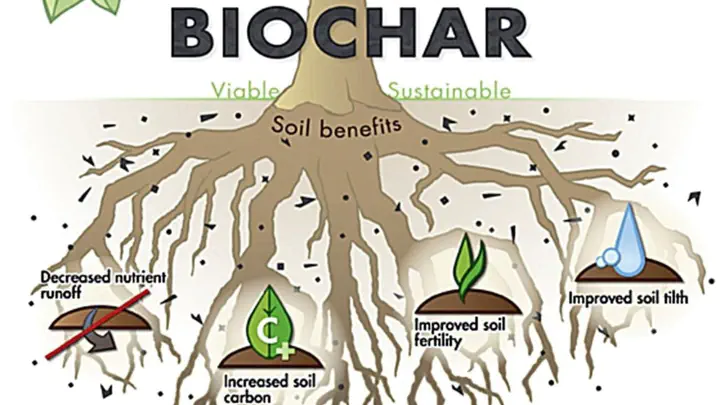Biochar
 Image credit: bountiful-benefits-biochar-crop-nutrition-laboratory
Image credit: bountiful-benefits-biochar-crop-nutrition-laboratory
Biochar is created through the so-called thermal breakdown of organic material at relatively low temperatures and with a constrained oxygen supply. Biochar, in a nutshell, is the carbon-rich byproduct of heating biomass, such as wood, manure, or leaves, in a closed container with little to no available air. One of the earliest industrial technologies created by humans is the manufacturing of charcoal, which is frequently reflected in this procedure. Because there are so many different types of biomass and charring circumstances, it is considerably more challenging to define biochar from a chemical standpoint than it is from a production standpoint. The word “char” is frequently used synonymously with “charcoal,” although it is also occasionally used to describe materials that have undergone less extensive charring than charcoal. Advantages of biochar:
- Biochar is a carbon-rich, stable solid that can withstand thousands of years in soil.
- The enormous amounts of animal dung that are produced can be disposed of using biochar.
- The hygroscopic nature of biochar allows it to take in and retain water from its surroundings. It is therefore the perfect soil material for areas with frequent water shortages.
- In addition to boosting agricultural output and protecting against several foliar and soil-borne diseases, biochar increases the soil fertility of acidic soils.
- Potentially, fossil fuels might be replaced by the heat energy generated during the synthesis of biochar. If biochar is found to be a useful resource, it might significantly enhance air quality and help reverse the consequences of climate change.
- Large amounts of hazardous gases are released into the environment when biomass is burned or naturally decomposed. Biochar similarly releases the same gases into the atmosphere, but the carbon content is constant.